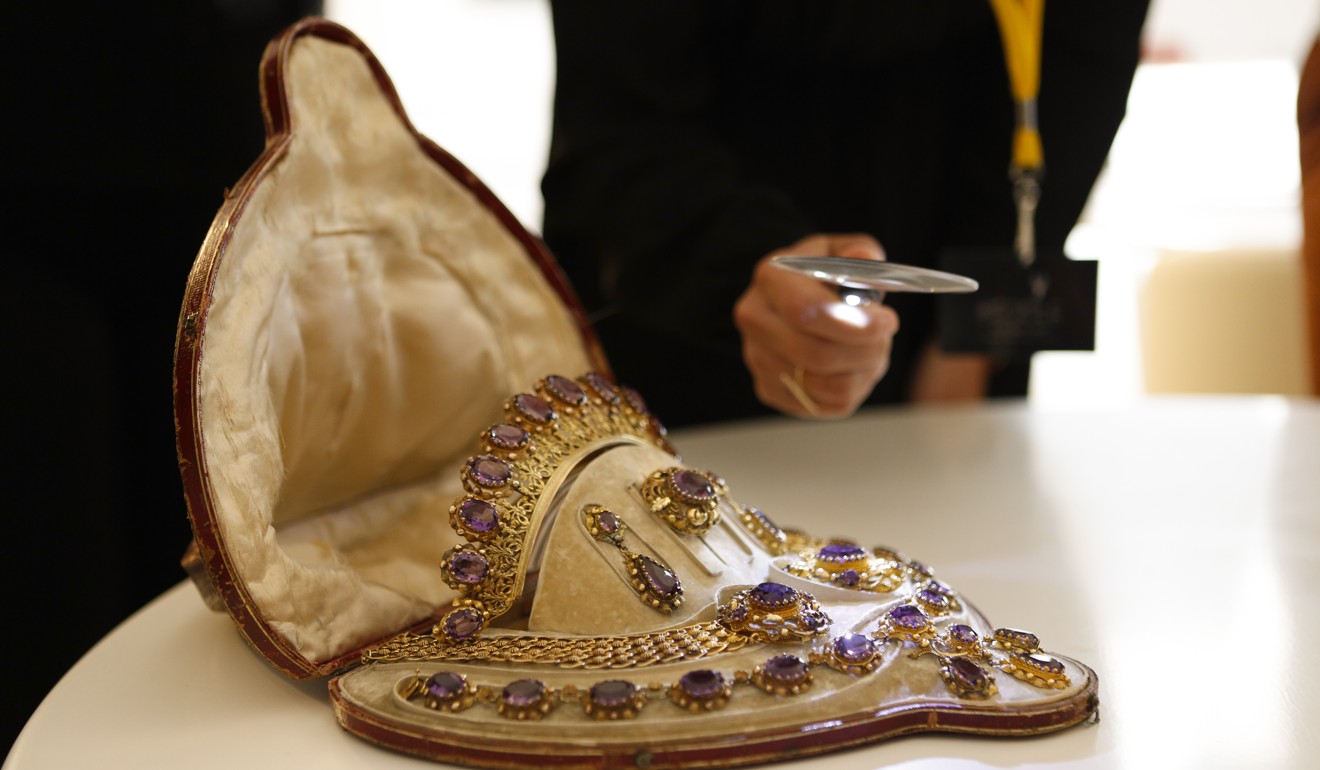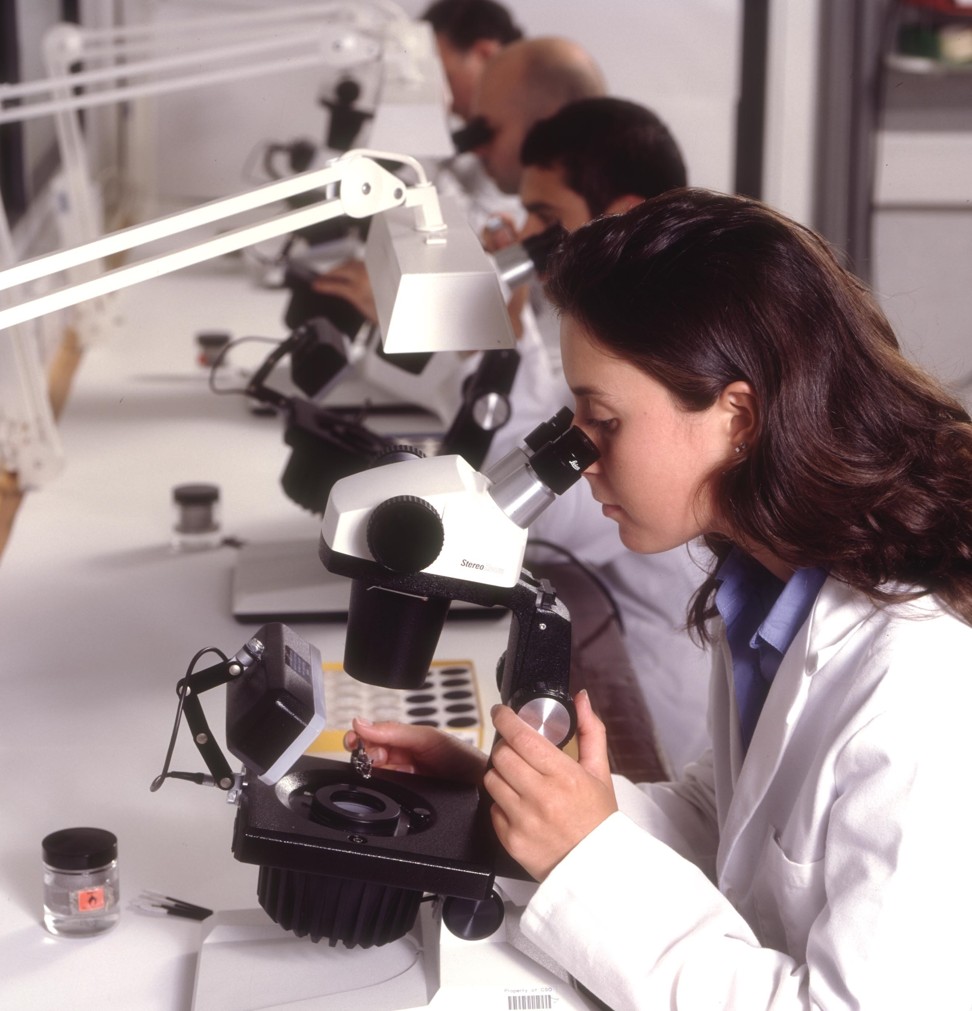
Polish your knowledge of gems with courses from Van Cleef & Arpels, De Beers and Gübelin
- With millennial consumers forgoing products in the quest for experiential luxury, jewellery brands are offering learning experiences through institutions like Van Cleef & Arpels’ L’Ecole, School of Jewelry Art

Visiting L’Ecole is a sensual experience. Upon checking in at reception, you are ushered into a lift that takes you to a multilevel studio, where you can take a class in the art history of jewellery at the former library of the Marquis de Segue, or join a gem-setting or polishing workshop (it’s harder than it looks). The more artistically inclined could experiment with Japanese urushi lacquer or gouache painting.
It’s no secret that experiential luxury is on the rise. According to a BCG report, nearly half of consumers – particularly millennials – say that they are forgoing products in favour of experiences. By 2022, experiential luxury is forecast to account for nearly two-thirds of the total luxury market.
For high jewellery brands, this means getting customers more involved. Whereas it might have been sufficient to proffer a bricks-and-mortar address and personalised customer service two decades ago, luxury jewellers like Van Cleef & Arpels, De Beers, Tiffany & Co and Gübelin have set up schools or workshops, allowing collectors an insight into the industry.

In 2012, Van Cleef & Arpels opened L’Ecole, School of Jewelry Art at one of Paris’ most coveted addresses, where it hosts classes and workshops, organises exhibitions and publishes books about jewellery arts. A second campus, the first outside Paris, is set to open in Hong Kong later this year.
While the school is supported by Van Cleef & Arpels, Elise Gonnet-Pon, managing director, L’Ecole Asia-Pacific, emphasises that the courses at L’Ecole are not “brand-focused”; instead, they pivot around three themes: savoir faire, the art history of jewellery and the universe of gemstones.
The gemstones course, which focuses on identifying different stones with a variety of gemological tools, is popular among connoisseurs who might be flying in for business and only have an afternoon to spare. The school also conducts nomadic courses in cities around the world, including Hong Kong.
Aside from offering its Paris courses, L’Ecole hosts evening conversations where local collectors are invited to share their experiences. Past speakers in Hong Kong include William Lim, Nicholas Bos, Edmond Chin and Nicholas Luchsinger.

Like L’Ecole, the courses at the De Beers Group Institute of Diamonds attract students from all walks of life. While the online-only diamond foundation course and its follow-up, the laboratory-based introduction to the 4Cs course, are popular among newcomers, the polished diamond grading course attracts those who have a basic understanding of diamonds and might be looking to enter the industry.
The synthetic diamond detection course zeros in on a specific concern in the diamond industry. “Having the knowledge to identify the differences between natural and synthetic diamonds is increasingly important as the production volume of synthetic diamonds has grown in recent years,” says Jodine Perrin, director of education at the De Beers Group Institute of Diamonds.
The institute’s diamond foundation course is ideal for those who want a flexible class schedule, and comprises eight modules over four months. Each is accompanied by an assessment, and students are awarded a Continuing Professional Development (CPD) accredited certificate from the institute at the end.
Courses are taught by tutors from De Beers Technologies Research Facility in London.
Last year, De Beers started partnering with China’s National Gemstone Testing Centre to train students in Hong Kong and mainland China, where demand for information is particularly high, says Perrin.

The Gübelin Academy is another jewellery school with a footprint in Hong Kong.
“Hong Kong is a major hub for the jewellery trade, hosting major trade shows in the world,” says Helen Molesworth, Gübelin Academy’s managing director.
Since its founding in 2013, the academy has grown from 10 students to an alumni network of about 1,000 students worldwide. Those coming through the doors are from varied backgrounds, from private collectors to trained gemologists and jewellery dealers, says Molesworth.
The Gübelin coloured gem professional programme has three tiers – Level One, which introduces the historical basics of the rubies, sapphires and emeralds – to Level Three, where students can master hands-on gemological examination over a five-day period.
“Many students think of diamonds as the most valuable precious gem, but historically, coloured gemstones have been prized for their rarity and beauty, protective powers and magical associations,” says Molesworth.
The best kind of learning is two-way, and sometimes the student has an interesting anecdote or two to contribute. During Molesworth’s first course in Hong Kong, the class had a discussion about sapphires and the royal engagement ring first worn by Diana, Princess of Wales, and later given by her son, William, to his then fiancée, Catherine Middleton.
“We were talking about how the weight was unclear as it wasn’t published in any records online,” says Molesworth. “Suddenly, a very quiet student put his hand up and said that his family business had actually repolished the stone just before William presented it to Catherine.”